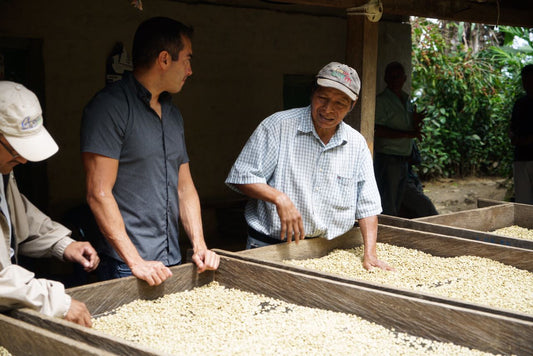
Guillermo del Toro: The Hollywood Director Inspiring Latinos Worldwide
In his long and glittering career, the award-winning titan of cinema Guillermo del Toro has deservedly received praise both on and off the screen.
Jump to:
A Champion of Mexican Cinema
When Guillermo del Toro won the Academy Award for Best Director for his movie The Shape of Water in 2018, it wasn’t only a win for him, but for all of Mexico. Thousands of people took to the streets to celebrate in Guadalajara, where the renowned director was born and raised.
For a period, it seemed like del Toro’s work and accomplished career was all anyone could talk about. And it has to do with a lot more than just his movies…
Throughout his career, Guillermo has always tried to find ways to show his support for the arts. In 1986, he co-founded the Guadalajara International Film Festival, which catapulted Mexican cinema's reputation around the world.
In fact, he’s had such a positive influence on Mexican culture that he has been recognized by the National Autonomous University of Mexico (UNAM), which gave him an Honoris Causa Doctorate for his contribution to cinema.
He also constantly shows his support for Mexican filmmakers. From encouraging his Twitter followers to see the work of talented yet lesser-known Latino directors, to helping young artists fulfill their dreams of studying cinematography with the Jenkins-Del Toro scholarship.
Guillermo del Toro's Career: A Snapshot
Over the years, del Toro has been involved in his fair share of iconic movies, from the Spanish Civil War allegory Pan's Labyrinth (2006) to the Oscar-winning The Shape of Water (2017).
His love for storytelling and movie making started at a young age. Did you know that, before he had graduated high school, he had already shot at least ten short movies!
None of those shorts made it to the big screen, but his first feature-length movie, Cronos (1993) was a hit. Shot in Spanish, this movie gained the director international recognition and suddenly he had Hollywood producers flocking to work with him.
After the success of Cronos, he went on to write and direct movies that tackle a range of themes, both in English and Spanish. Among his most famous are The Devil's Backbone, Mimic, Blade II, Hellboy, Pacific Rim, and most recently, a unique take on the classic tale Pinocchio.
Many have labeled Guillermo as a master of the dark fantasy and horror genres.
To reduce him to such a label is sacrilege. Admittedly, it’s hard to find a single underlying theme for his vast body of work, though a common idea he explores is that of people who are haunted by their own histories, having to confront their memories in order to heal and move on.
This relatable concept, combined with his visually captivating direction and signature spine-chilling moments, has kept audiences rooted to their seats for decades.

Finding Inspiration in Mexico
You might be inclined to believe that Latinos regard Guillermo del Toro highly just because he’s a compatriot. But you would be sorely mistaken.
Rather, it’s that he’s brought Mexican culture along for the ride: placed Mexico in the limelight and projected its lesser-seen side to the rest of the world. It might not always seem obvious to the casual viewer, but a touch of Mexican soul can be found in all his cinematic works.
For example, the carnival scenes in his 2021 movie Nightmare Alley are inspired by real carnivals he visited when he was a child living in Guadalajara.
“The spider-woman act is one I saw when I was four or five,” he told The Guardian. “I have a photograph of my brother and me on a little horse cart on the day we saw her. I was tiny, and the impression it made on me was so strong.”
Similarly, despite its Italian roots, Mexican art was a huge inspiration for Pinocchio, his latest animated movie. “Those two figures have every single thing from Mexican sculpture and creativity,” del Toro admitted. “They can be an alebrije from Michoacán. They can be a hand-carved saint in a little town church.”
It goes deeper than that, too. The way in which characters deal with death his movies is reminiscent of Mexican beliefs and symbolism. According to del Toro, “There’s an incredibly rich folklore that’s not explored often in cinema – we have two supernatural characters in the movie that embody it. One is La Muerte, a personification of death, and the other is Xibalba, inspired by the idea of hell in southern Mexico that’s survived from Mayan times. It’s fascinating how the old magical ideas of death and the afterlife were merged with the influence of Spanish Catholicism.”
Overall, Guillermo del Toro is a source of inspiration for Latino filmmakers. He is living proof that Mexican writers and directors achieve stratospheric success beyond the telenovelas and that no matter where we come from, we can create stories that resonate with everyone.
Nowhere is this clearer than in his Oscar acceptance speech: “The greatest thing our art does, is to erase the lines in the sand. We should continue doing that when the world tells us to make them deeper.”
So, pick up your camera and get the film rolling. You never know where you might end up.


